- What is Web 3.0?
- What is Web 2.0?
- Web 3.0 vs Web 2.0 – Which is better for your business?
- Comparison on the Basis of Types of Applications
- Web 3.0 vs Web 2.0 – Difference in Business Operations
- Essential Tech Needed for Web 3.0 Development
- Essential Tech Needed for Web 2.0 Development
- Conclusion
- Frequently Asked Questions
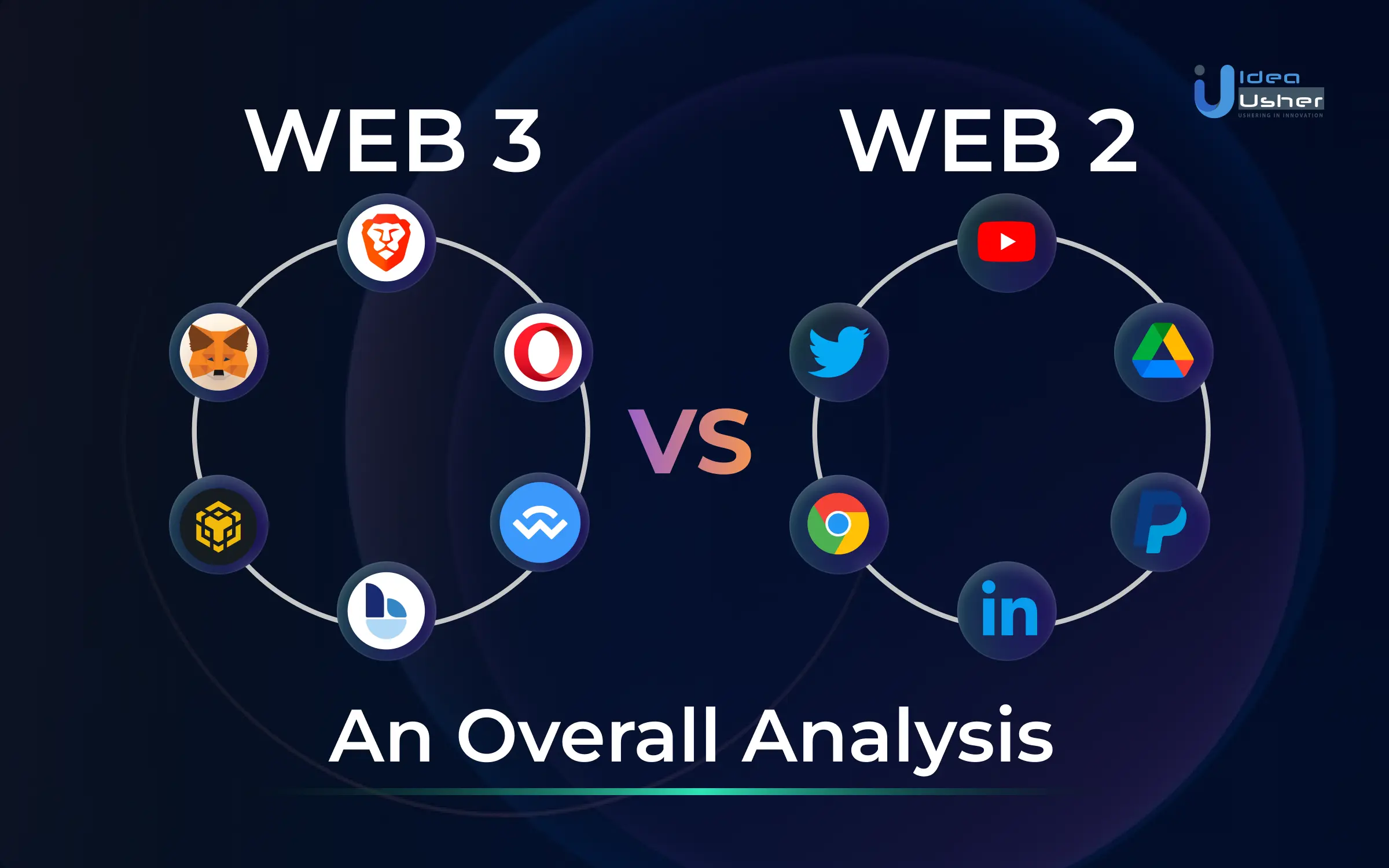
Welcome to the future of the internet – a digital evolution that is reshaping the way we interact, conduct business, and navigate the online world. In this era of technological advancement, the battle between Web 2.0 and its successor, Web 3.0, has taken center stage. Web 2.0 brought us social media, user-generated content, as well as dynamic web applications, transforming the internet into a dynamic and collaborative space. Now, Web 3.0 is poised to redefine our digital experiences, consequently, promising decentralized networks, artificial intelligence, as well as unparalleled data control.
In this blog, we’ll be in an in-depth exploration, comparing Web 3.0 vs. Web 2.0 in every aspect, revealing the seismic shifts and opportunities that lie ahead.
- What is Web 3.0?
- What is Web 2.0?
- Web 3.0 vs Web 2.0 – Which is better for your business?
- Comparison on the Basis of Types of Applications
- Web 3.0 vs Web 2.0 – Difference in Business Operations
- Essential Tech Needed for Web 3.0 Development
- Essential Tech Needed for Web 2.0 Development
- Conclusion
- Frequently Asked Questions
What is Web 3.0?
Web 3.0, often referred to as the “Semantic Web” or “Decentralized Web,” represents the next evolutionary stage of the internet. Unlike its predecessors, Web 3.0 is characterized by a more intelligent, interconnected, and decentralized ecosystem. It envisions a web where information is not only easily accessible but also comprehensible by machines, enabling advanced data analysis and automation. In Web 3.0, decentralized technologies such as blockchain play a pivotal role in creating trust, security, as well as ownership of data, giving users more control over their online identities and assets. This paradigm shift aims to empower users with greater privacy, data sovereignty, and the ability to interact with digital services in a more meaningful and personalized manner, thus, ultimately revolutionizing the way we engage with the internet and digital content.
Web 3.0: Market Growth Stats
The growth of Web 3.0 is nothing short of remarkable, with the global market expanding rapidly. In 2022, it reached a size of USD 2.2 billion, but the projections for its future are even more astounding. By 2032, the Web 3.0 market is expected to surge to an impressive USD 81.9 billion, reflecting a staggering compound annual growth rate (CAGR) of 44.5%. This exponential growth underscores the transformative potential of Web 3.0 technologies, thus, promising to revolutionize how we interact with the internet, handle data, as well as conduct business in the coming decade.
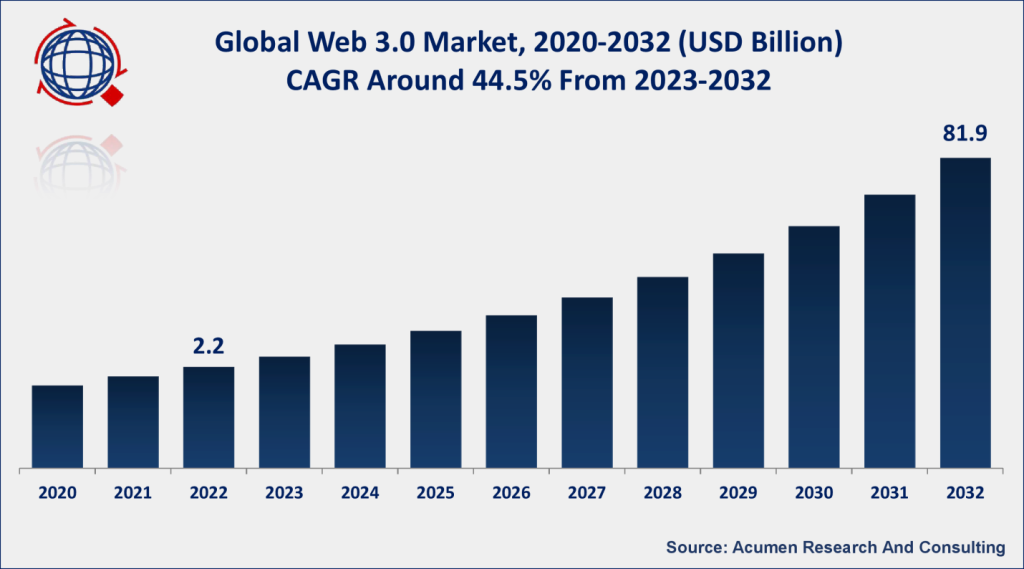
What is Web 2.0?
Web 2.0 refers to a transformative phase in the evolution of the World Wide Web that emerged in the early 21st century. It represents a shift from the static, one-way communication of the early internet (Web 1.0) to a dynamic, interactive, as well as user-driven online environment. In Web 2.0, the internet became a platform for collaboration, user-generated content, and social interaction. This era introduced a plethora of web applications and services that encouraged user participation, such as social media platforms, wikis, blogs, and web-based productivity tools. Web 2.0 fundamentally altered the way people engage with the internet, consequently, empowering individuals to create, share, as well as collaborate on content, and it laid the foundation for the interconnected, socially-driven digital landscape we experience today.
Web 2.0: Market Growth Stats
The growth of Web 2.0 has had a substantial impact on the global data center market. In 2021, the market was valued at USD 2.04 billion, and it is projected to continue expanding, reaching an estimated value of USD 2.40 billion by 2029. This growth is attributed to the increasing demand for dynamic and interactive web applications and services that characterize Web 2.0. As businesses and individuals increasingly rely on web-based platforms for communication, collaboration, and data storage, the need for robust and scalable data centers has surged. This trend is expected to persist, driving a steady CAGR of 2.05% during the forecast period from 2022 to 2029.
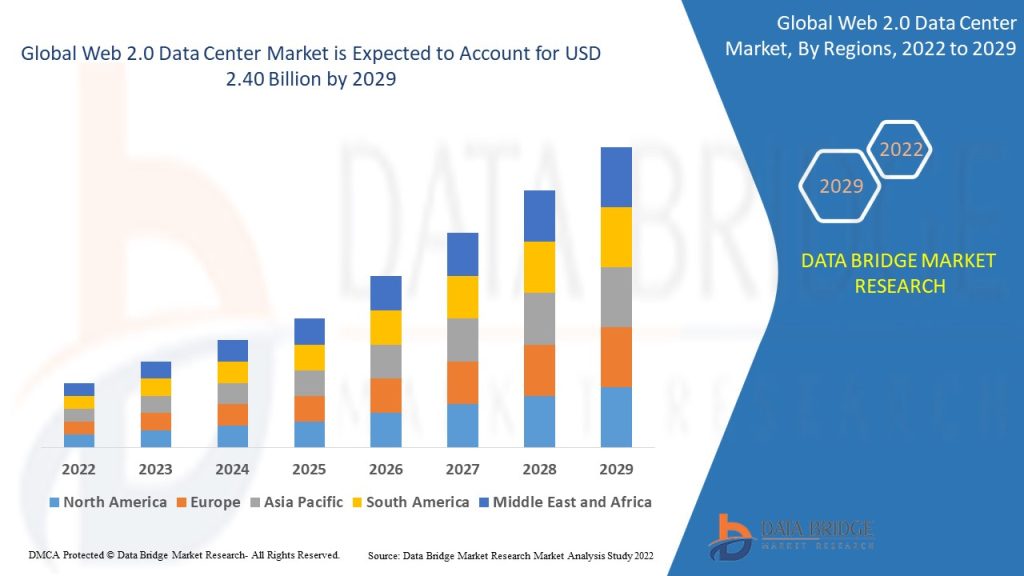
Web 3.0 vs Web 2.0 – Which is better for your business?
At first glance, these two web iterations may seem similar, with Web 3.0 building upon the foundations of Web 2.0. However, a deeper examination reveals crucial differences that can significantly impact your business. To make an informed decision, it’s essential to consider various factors.
User Interface:
The evolution of the internet has brought us from the static web of the early 2000s to the dynamic as well as interactive online world we know as Web 2.0. However, a new wave is on the horizon, known as Web 3.0, which aims to revolutionize the user experience further. In this article, we’ll delve into the user interface aspects of both Web 2.0 and Web 3.0 to help you understand which might be better for your business.
Web 2.0 User Interface:
Web 2.0 ushered in a new era of user interaction. It offers a dynamic and visually appealing user interface that provides an excellent user experience. Websites and applications load faster, and real-time updates keep users engaged. Social media platforms like Facebook, Twitter, and YouTube epitomize this phase, offering seamless scrolling and instant content updates.
However, one drawback of Web 2.0 is that the control of information often rests in the hands of tech giants and website owners. They curate and filter the content, which can sometimes lead to concerns about data privacy and manipulation.
Web 3.0 User Interface:
Web 3.0 takes user interface to the next level by providing users with more control over their data and online experiences. The interface aims to be more secure and user-centric. In Web 3.0, data is decentralized, with individuals having ownership and control. This not only enhances privacy but also reduces the risk of data breaches and manipulation.
However, because Web 3.0 is still in its early stages of development, it may not offer the same level of dynamic user interfaces as Web 2.0. Some Web 3.0 applications might be slower due to their reliance on emerging technologies like blockchain.
Ownership:
The transition from Web 2.0 to Web 3.0 has sparked numerous discussions about the fundamental shift in ownership of data and content on the internet. Understanding these differences is crucial for businesses aiming to make informed choices about their online presence.
Web 2.0 Ownership:
In Web 2.0, data ownership primarily rests in the hands of centralized authorities and platform owners. Tech giants like Google, Facebook, and Amazon have significant control over the information shared and consumed on their platforms. This centralization allows them to personalize user experiences, deliver targeted advertisements, and, to some extent, dictate content regulations.
While Web 2.0 offers businesses the advantage of reaching a massive audience and utilizing data-driven insights for marketing, it also means relinquishing a degree of control. Businesses operating in this environment must comply with platform policies and adapt to ever-changing algorithms.
Web 3.0 Ownership:
Web 3.0 presents a revolutionary shift in ownership dynamics. It operates on decentralized principles, which means users have more control over their data and digital assets. In Web 3.0, individuals can own their data, content, and digital identities securely through blockchain technology. This approach empowers users to decide who accesses their data and how it’s used, thus enhancing privacy and security.
For businesses, this could mean a more transparent and user-centric approach to data handling. However, Web 3.0 is still in its infancy, and navigating the decentralized landscape may pose challenges for some. It may also require adapting to new business models based on tokenization and blockchain technologies.
Security & Privacy:
As businesses navigate the ever-changing digital landscape, one critical aspect to consider is the level of security and privacy offered by different web versions. Web 2.0 and the emerging Web 3.0 have distinct approaches in order to safeguard sensitive information as well as user privacy.
Web 2.0 Security & Privacy:
In the realm of Web 2.0, security and privacy are often a shared responsibility between users and centralized authorities. While established platforms like Facebook and Google invest heavily in security measures, users are required to trust these entities with their personal data. Data breaches and privacy concerns have occasionally arisen, highlighting the challenges of centralized control.
On the upside, the centralized model allows for personalized user experiences and efficient content moderation. However, it also means that users may not have full control over their data, and they must rely on platform policies and data handling practices.
Web 3.0 Security & Privacy:
Web 3.0 introduces a paradigm shift in security and privacy. It operates on decentralized principles, where users have greater control over their data as well as digital identities. Moreover, blockchain technology, a cornerstone of Web 3.0, offers robust security features through encryption immutability. Users can decide who accesses their data, as well as transactions occur in a trustless environment.
For businesses, this decentralized approach potentially reduces the risk of data breaches and enhances user privacy. However, the transition to Web 3.0 may require adapting to new security paradigms, such as managing private keys securely, and navigating the complex world of blockchain technology.
Technologies:
Web 2.0 and the emerging Web 3.0 represent different phases in this evolution, each harnessing distinct technologies to power their platforms.
Web 2.0 Technologies:
2.0 is characterized by the proliferation of interactive and user-friendly technologies. JavaScript, Ajax, and other web development languages drove the creation of dynamic websites and applications. Social media platforms, video streaming services, as well as collaborative tools such as Google Docs thrived on these technologies.
Data analytics and machine learning also became integral to Web 2.0, enabling businesses to gather insights from user interactions and personalize content delivery. Cloud computing facilitated scalable and cost-effective infrastructure for online services.
Web 3.0 Technologies:
Web 3.0 represents a leap forward in technological innovation. While it builds on many of the technologies from Web 2.0, it introduces game-changers like blockchain, artificial intelligence (AI), and decentralized computing.
Blockchain technology, known for its security and transparency, underpins Web 3.0’s decentralized nature. It enables secure transactions, data ownership, and smart contracts. AI as well as machine learning algorithms enhance user experiences by providing more personalized and context-aware content.
Decentralized applications (DApps) and cryptocurrency technologies such as Ethereum and Polkadot are at the forefront of Web 3.0. These technologies enable users to interact with applications as well as services while retaining control over their data and assets.
Comparison on the Basis of Types of Applications
The transition from Web 2.0 to Web 3.0 has brought about profound changes in the nature and capabilities of web applications. Let’s explore this transformation by comparing the types of applications associated with each version.
Web 2.0 Applications:
Web 2.0 is often associated with the rise of interactive web applications. These applications ushered in a new era of user engagement and content creation. Here are some key types of applications that characterize Web 2.0:
Two-way Websites: Web 2.0 brought forth websites that allowed for two-way communication. Social media platforms like Facebook and Twitter enabled users not only to consume content but also to create and share it. This laid the foundation for user-generated content as well as online communities.
Video Websites: The explosion of video-sharing platforms such as YouTube epitomized the Web 2.0 era. Users could upload, share, and comment on videos, revolutionizing how we consume as well as create multimedia content.
Podcasts: Podcasting became a popular medium for content creators to share audio content. It allowed for niche discussions and storytelling, further diversifying the online content landscape.
Individual Blogs: Personal blogs gained prominence in Web 2.0, giving individuals a platform to express their thoughts, expertise, and creativity. Blogging became a powerful tool for personal branding as well as knowledge sharing.
Web 3.0 Applications:
Web 3.0 introduces a paradigm shift in the types of applications it encourages. It leverages advanced technologies such as Machine Learning (ML) and Artificial Intelligence (AI) in order to create smart, context-aware applications. Here are some noteworthy types of applications associated with Web 3.0:
Integrated Gaming: Web 3.0 enables the development of integrated gaming experiences. These games can seamlessly blend with the real world, utilizing augmented reality (AR) and virtual reality (VR) technologies. Gamification elements can enhance user engagement across various industries, from education to healthcare.
3D Portals: Web 3.0 fosters the creation of immersive 3D web environments. These portals offer users a lifelike experience, whether for virtual shopping, exploring virtual museums, or conducting remote meetings in virtual spaces.
Multi-User Virtual Environments: Web 3.0 facilitates the development of multi-user virtual environments where users can interact with each other and digital objects in real-time. These environments are invaluable for collaboration, training, as well as social interaction.
Web 3.0 vs Web 2.0 – Difference in Business Operations
The shift from Web 2.0 to Web 3.0 is not merely a progression of internet versions; it’s a transformative leap that significantly impacts how businesses operate in the digital realm. Web 3.0 introduces a host of changes that provide businesses with new opportunities and challenges. In this article, we will delve into the differences in business operations between Web 2.0 and Web 3.0, focusing on key aspects that highlight the advantages and advancements offered by the latter.
Lack of Third-Party Intermediaries:
One of the most prominent distinctions between Web 2.0 and Web 3.0 is the concept of decentralization. In Web 2.0, businesses often rely on centralized servers and third-party intermediaries in order to process and store data. Web 3.0, powered by decentralized blockchain technology, flips this paradigm. Data can be processed across multiple devices on decentralized networks, thus, reducing the need for intermediaries.
This shift empowers businesses in several ways:
Lower Operating Costs: Small businesses can significantly reduce operational expenses by eliminating the fees associated with third-party intermediaries and centralized servers.
Improved Competitiveness: Lower costs and more efficient data processing mean small businesses can compete more effectively with larger enterprises.
Enhanced Data Utilization: Businesses can leverage their data more effectively in order to enhance products and services, create personalized recommendations, as well as gain a deeper understanding of customer needs.
Innovation: The decentralized nature of Web 3.0 can stimulate innovation, consequently, leading to the development of new business models and opportunities.
Customer Relationship Management (CRM):
Web 3.0 revolutionizes how businesses interact with customers and manage CRM. Traditional CRM has often been hindered by limited data, making it challenging to create a comprehensive customer profile. Web 3.0, with its access to a wealth of data sources such as social media and browsing history, allows businesses to understand customer preferences better.
Here’s how Web 3.0 transforms CRM:
Customized Services: With richer customer data, businesses can offer more personalized services, thus, resulting in increased sales and customer loyalty.
Improved Customer Trust: Decentralized data storage ensures the integrity of customer information, thus, enhancing trust and transparency.
Real-time Updates: Customers can access real-time information about their transactions and supply chains, thus, enhancing the credibility of the business.
Web 3.0, in contrast to Web 2.0, provides a more comprehensive and accurate view of customers, empowering businesses to build stronger relationships and deliver better-tailored offerings.
Supply Chain Management (SCM):
Supply Chain Management is a critical aspect of business operations, and Web 3.0 brings significant changes to this domain. Traditional supply chains are evolving into decentralized Supply Chain Networks (SCNs) driven by information as well as communication technologies.
Web 3.0’s impact on SCM includes:
Enhanced Resource Flow: SCNs optimize the flow of resources, information, and cash throughout the supply chain, thus, ultimately meeting consumer demand more efficiently.
Decentralization: SCNs operate on decentralized principles, consequently, reducing reliance on centralized intermediaries as well as enhancing transparency.
Real-time Tracking: Web 3.0 enables real-time tracking of supply chain operations, providing businesses as well as customers with accurate and timely updates.
Web 3.0 transforms SCM into a more efficient, transparent, and responsive process, thus, aligning it with the demands of the modern business landscape.
New Marketing Outlook:
Web 3.0 introduces groundbreaking possibilities for marketing in the digital age. Businesses, particularly small ones, can now engage customers directly with mobile advertisements and leverage sophisticated segmentation and marketing research. The ability to access nuanced customer data as well as behaviors opens up a world of opportunities.
Key features of Web 3.0 that impact marketing include:
Sophisticated Data Utilization: Businesses can craft more effective marketing messages by harnessing advanced data on customer online behaviors.
Real-time Data Tracking: Apps that utilize Web 3.0 features can track real-time data, thus, enabling businesses to adapt their marketing strategies on the fly.
Essential Tech Needed for Web 3.0 Development
Here’s a breakdown of the essential technologies and components needed for Web 3.0 development, presented in a list format:
Blockchain Technology:
- Ethereum, Polkadot, or other blockchain platforms for building decentralized applications (DApps).
- Smart contract development using languages like Solidity or Rust.
Decentralized Storage:
- IPFS (InterPlanetary File System) for distributed, peer-to-peer file storage.
- Storj, Filecoin, or Swarm for decentralized data storage.
Identity Management:
- Decentralized identity solutions like DID (Decentralized Identifier) and Verifiable Credentials.
- Self-sovereign identity frameworks for user authentication.
Oracles:
- Chainlink oracles for connecting smart contracts with external data sources and real-world events.
Artificial Intelligence (AI) and Machine Learning (ML):
- AI/ML frameworks such as TensorFlow, PyTorch, or scikit-learn for creating intelligent applications.
- Natural Language Processing (NLP) libraries for advanced text analysis and chatbots.
Semantic Web Technologies:
- RDF (Resource Description Framework) for structured data representation.
- SPARQL for querying linked data sources.
3D and VR Development:
- Unity or Unreal Engine for creating immersive virtual reality (VR) experiences.
- WebXR and A-Frame for building web-based 3D and VR applications.
Decentralized Finance (DeFi) Tools:
- Integration with DeFi protocols like Compound, Aave, and MakerDAO for financial applications.
- Building decentralized exchanges (DEX) using platforms like Uniswap or SushiSwap.
WebAssembly (Wasm):
- WebAssembly for creating efficient and secure smart contracts and DApps.
- Compatibility with multiple programming languages, including Rust and C++.
Privacy Solutions:
- Zero-knowledge proofs (ZKPs) and privacy-focused blockchain networks like Zcash for enhanced data privacy.
- Tools for implementing differential privacy and secure data sharing.
Interoperability Protocols:
- Cross-chain solutions like Polkadot’s parachains or Cosmos’s IBC (Inter-Blockchain Communication) for seamless communication between blockchains.
Decentralized Finance (DeFi) Tools:
- Integration with DeFi protocols like Compound, Aave, and MakerDAO for financial applications.
- Building decentralized exchanges (DEX) using platforms like Uniswap or SushiSwap.
WebAssembly (Wasm):
- WebAssembly for creating efficient and secure smart contracts and DApps.
- Compatibility with multiple programming languages, including Rust and C++.
Privacy Solutions:
- Zero-knowledge proofs (ZKPs) and privacy-focused blockchain networks like Zcash for enhanced data privacy.
- Tools for implementing differential privacy and secure data sharing.
Interoperability Protocols:
- Cross-chain solutions like Polkadot’s parachains or Cosmos’s IBC (Inter-Blockchain Communication) for seamless communication between blockchains.
Essential Tech Needed for Web 2.0 Development
Here are the essential tech stacks you’ll need, outlined in bullet points:
HTML, CSS, and JavaScript:
- HTML (Hypertext Markup Language) for structuring web content.
- CSS (Cascading Style Sheets) for styling and layout.
- JavaScript for adding interactivity and client-side functionality.
AJAX (Asynchronous JavaScript and XML):
- Enables seamless data retrieval and updates without refreshing the entire page, enhancing user experience.
Front-End Frameworks:
- Popular frameworks like React, Angular, or Vue.js streamline UI development, offering reusable components and efficient data binding.
Back-End Technologies:
- Server-side technologies like Node.js, Ruby on Rails, or Django to manage server operations, database interactions, and application logic.
Databases:
- Relational databases (e.g., MySQL, PostgreSQL) or NoSQL databases (e.g., MongoDB, Cassandra) for data storage and retrieval.
RESTful APIs:
- Creating APIs that adhere to Representational State Transfer (REST) principles for seamless communication between the front-end and back-end.
Web Services:
- Integration of web services like SOAP or JSON-RPC for data exchange with external systems.
Version Control Systems:
- Tools like Git to manage code repositories, enabling collaboration and code versioning.
Responsive Design:
- Frameworks like Bootstrap or CSS Grid for designing web applications that adapt to various screen sizes and devices.
Browser Developer Tools:
- Familiarity with browser developer tools (e.g., Chrome DevTools) for debugging, inspecting elements, and profiling performance.
Content Management Systems (CMS):
- If required, CMS platforms like WordPress or Drupal can simplify content creation and management.
Conclusion
In this comprehensive analysis of Web 3.0 vs. Web 2.0, we’ve explored the internet’s evolution, and its transformative impact on our digital experiences. Web 2.0, with user-generated content and dynamic interfaces, laid the foundation for today’s internet. Yet, Web 3.0 signifies a paradigm shift with decentralization, AI-driven intelligence, as well as enhanced data control. The choice between them depends on specific goals and needs, as they coexist, each offering unique benefits. Whether you seek dynamic engagement with Web 2.0 or the decentralized possibilities of Web 3.0, both promise exciting opportunities for innovation as well as connectivity in our ever-evolving digital landscape. Understanding your requirements is key in order to shape your digital journey.
Frequently Asked Questions
Q. What is the main difference between Web 2.0 and Web 3.0 development?
A. Web 2.0 development focuses on creating dynamic and interactive web applications with features such as user-generated content and social collaboration. In contrast, Web 3.0 development emphasizes decentralization, AI-driven capabilities, as well as enhanced data control.
Q. How does Web 3.0 impact data privacy compared to Web 2.0?
A. Web 3.0 places a stronger emphasis on data privacy by enabling users to have more control over their data through decentralized networks as well as blockchain technology. In Web 2.0, data control often rests with centralized platforms.
Q. Which technology stacks are essential for Web 2.0 development?
A. Key technologies for Web 2.0 development include HTML, CSS, JavaScript, AJAX for interactivity, front-end frameworks such as React, back-end technologies such as Node.js, and databases such as MySQL or MongoDB.
Q. What are some advantages of Web 3.0 development for businesses?
A. Web 3.0 offers businesses benefits like reduced reliance on third-party intermediaries, improved customer relationship management with richer data, supply chain optimization, innovative marketing opportunities, as well as enhanced security through decentralized networks.





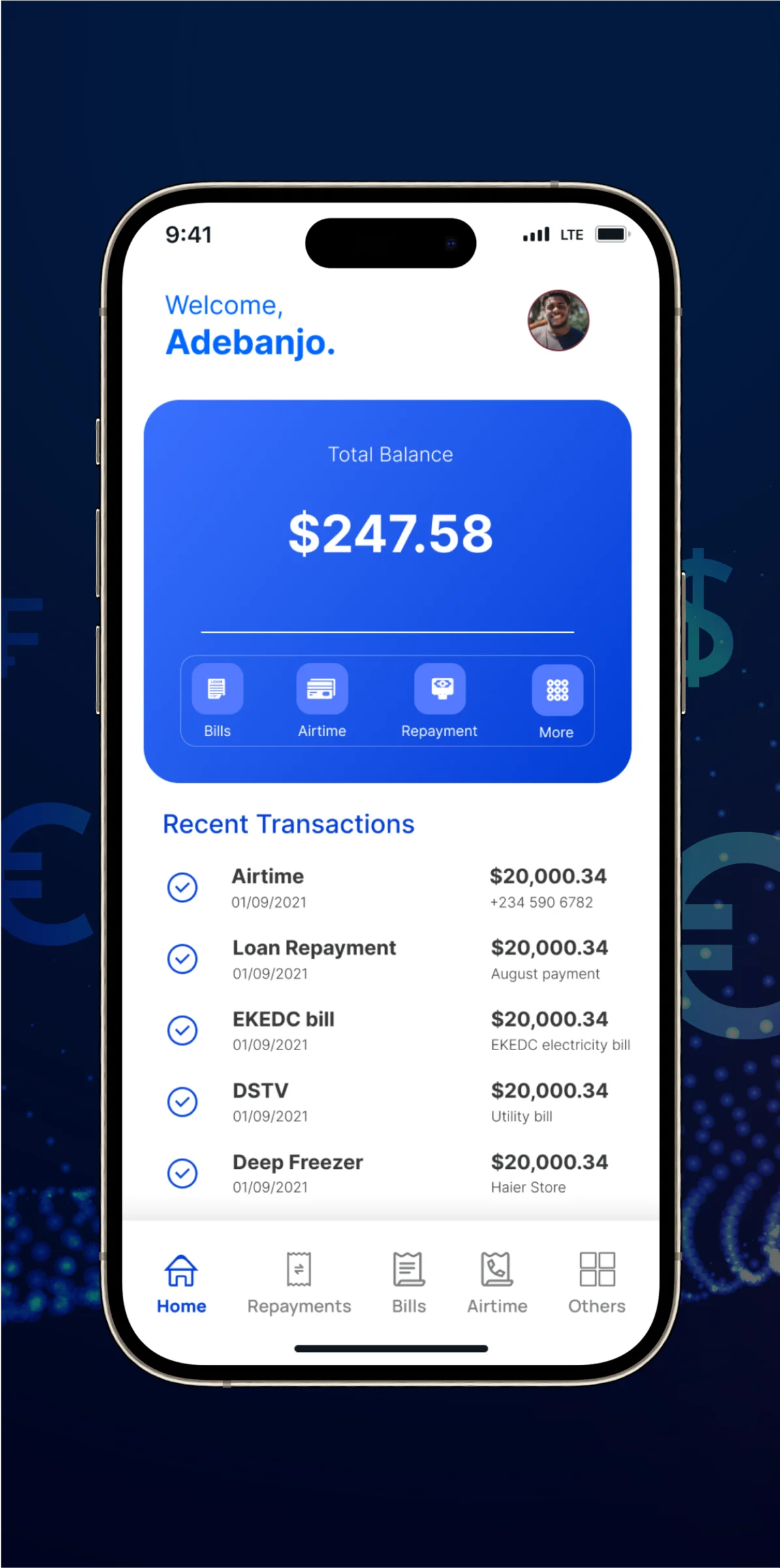

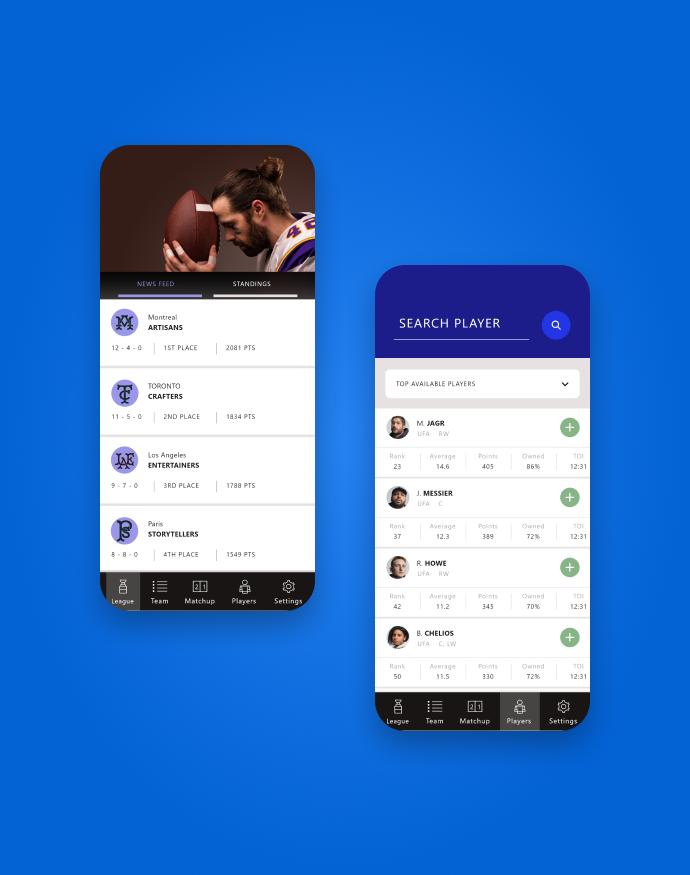
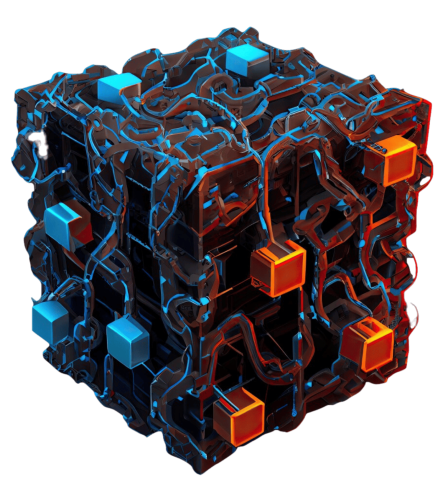


Yuvraj Singh